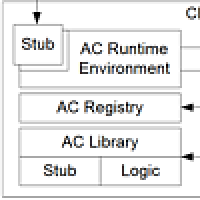Active Components as a Method for Coupling Data and Services - A Database-Driven Application Development Process

In the area of highly interactive systems, the use of object databases has signi cantly grown in the past few years due to the fact that one can, not only persistently store data in the form of objects, but also provide additional functionality in terms of methods defined on these objects. However, a limitation of such a tight coupling of objects and their methods is that parts of the application logic cannot be reused without also having instances of these objects in the new application database. Based on our experience of designing multiple interactive cross-media applications, we propose an approach where we distinguish between regular database objects containing the data and so-called active components storing metadata about specific services. Active components are first class objects which, at activation time, can perform some operations on the server as well as on the client side. Since active components are standalone lightweight components, they can be dynamically bound to single objects or semantically grouped sets of objects and be automatically invoked by different forms of database interactions. The database-driven development of arbitrary client and server-side application functionality not only simpli es the design of highly interactive systems, but also improves the reuse of existing components across different systems.
Publication Reference
Signer, B. and Norrie, M.C.: "Active Components as a Method for Coupling Data and Services - A Database-Driven Application Development Process", Proceedings of the 2nd International Conference on Object Databases (ICOODB 2009), Zurich, Switzerland, July 2009
WISE Authors
Related Research Topic(s)
Related Research Project(s)
- iPaper - Interactive Paper Framework for Paper-Digital Integration
- iServer - Cross-Media Link Server




